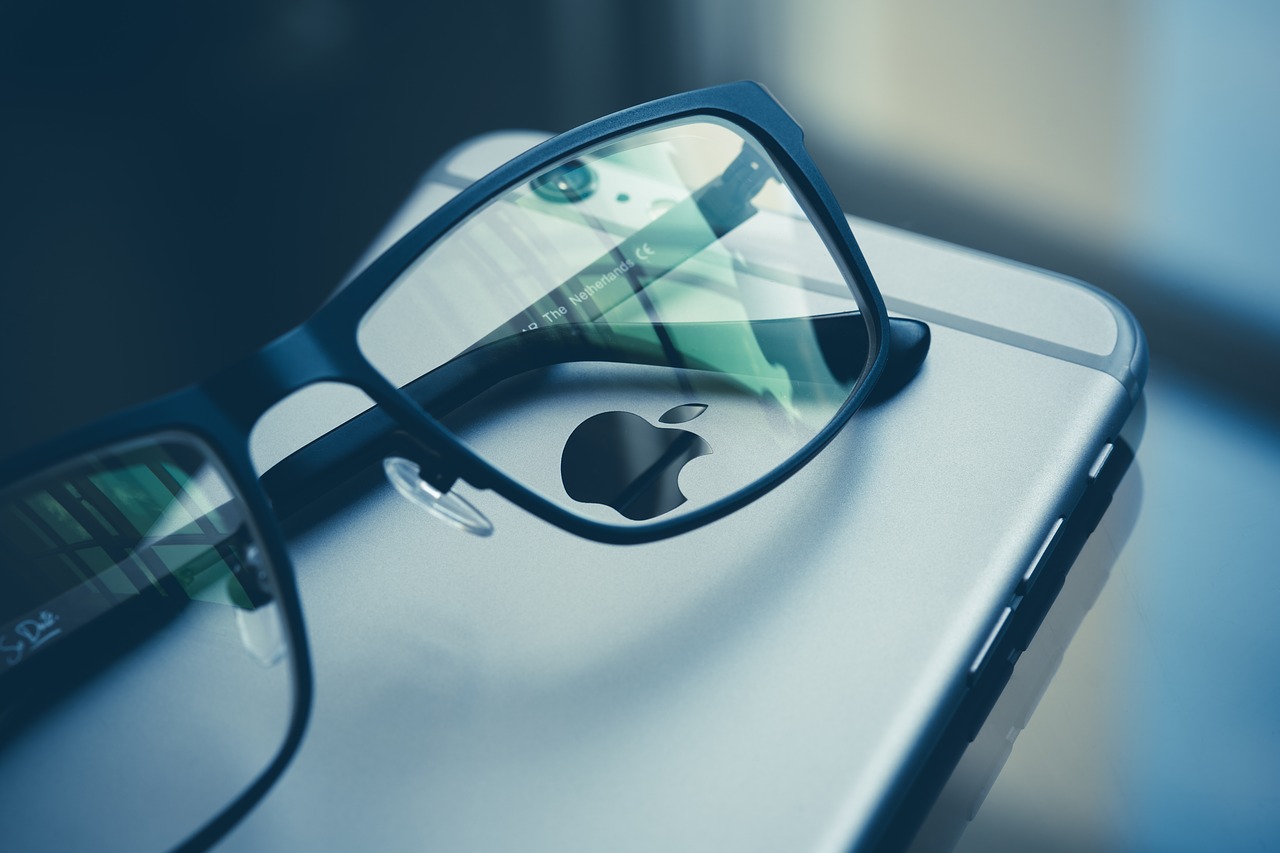Given the sophistication of today’s smartphones as compared with their counterparts of just a decade ago, it’s hard to imagine what these devices might look like 10 years down the road. Read on for a look at some of the fun and futuristic features that we can expect to see in the next generation of smartphones.
Photonic crystal displays
 Modern smartphone screens can display an incredible range of rich and saturated colors. The biggest limiting factor is their responsiveness to changing light conditions, which is minimal at best. That’s where photonic crystals—a big focus area of recent research and development efforts—come in. Unlike LCD or OLED displays that give off bright light regardless of their environment, photonic crystal displays use special nanostructures that have the ability to register the amount of ambient light and adapt the light that they emit accordingly. The result is a smartphone screen that you’ll always be able to see perfectly, whether in a softly lit restaurant or in a bright, sunny park.
Modern smartphone screens can display an incredible range of rich and saturated colors. The biggest limiting factor is their responsiveness to changing light conditions, which is minimal at best. That’s where photonic crystals—a big focus area of recent research and development efforts—come in. Unlike LCD or OLED displays that give off bright light regardless of their environment, photonic crystal displays use special nanostructures that have the ability to register the amount of ambient light and adapt the light that they emit accordingly. The result is a smartphone screen that you’ll always be able to see perfectly, whether in a softly lit restaurant or in a bright, sunny park.
Nano-tech batteries
Are you frustrated by how long it takes for your smartphone battery to charge? Then you will welcome the efforts of the Israeli tech company StoreDot. The firm is working on a nano-technology battery that—amazingly—takes less than a minute to charge from zero to 100%. Somewhat surprisingly, this new technology was inspired by recent research into Alzheimer’s disease, specifically by the discovery that the peptide molecules that play a major role in the development of Alzheimer’s are, in fact, excellent electrical storage units. At present, the battery life is only about two-thirds that of a conventional lithium-ion battery, but further improvements are expected.
Headphone surround sound
Imagine slipping on a pair of headphones and being able to hear the sound from the video you’re watching on your smartphone in full surround sound. That’s what audio developer DTS is promising with its 7.1 mobile audio solution, which aims to recreate in detail the sound of specific listening environments. While not all source material is compatible with the system at the moment, the fact that newer smartphones are equipped with increasingly higher processing power should help to support rapid advancements in audio technology.
Biometric authentication
Using a fingerprint scan to unlock your phone doesn’t seem as far-fetched as it once did now that more models, including the iPhone 6 and up, support this technology. However, some are skeptical that current smartphone fingerprint readers don’t use enough data points and are therefore at greater risk of being hacked. The telecommunications company Qualcomm is stepping in to address this problem with its new ultrasonic fingerprint scanner. Instead of a basic 2D scan, Qualcomm’s reader uses a piezoelectric layer (a layer which generates electricity in response to pressure) to produce a complete “ultrasound” of your finger. The scanner also boasts greatly increased resolution, allowing a fingerprint to be captured in more detail for greater security.
Virtual reality
 While specialized virtual reality headsets such as PlayStation VR and Oculus Rift are already being snapped up by eager, tech-savvy consumers, virtual reality (VR) technology might soon be available to anyone with a smartphone. Now that smartphone displays are increasingly high-resolution—4K displays are being rolled out across a wide variety of models—smartphones are a perfect fit for VR applications. The most likely scenario for how this would work is a special headset worn by the user into which the smartphone would be inserted. The screen would serve as the headset’s display, and the high resolution would ensure a smooth and immersive viewing experience.
While specialized virtual reality headsets such as PlayStation VR and Oculus Rift are already being snapped up by eager, tech-savvy consumers, virtual reality (VR) technology might soon be available to anyone with a smartphone. Now that smartphone displays are increasingly high-resolution—4K displays are being rolled out across a wide variety of models—smartphones are a perfect fit for VR applications. The most likely scenario for how this would work is a special headset worn by the user into which the smartphone would be inserted. The screen would serve as the headset’s display, and the high resolution would ensure a smooth and immersive viewing experience.
Graphene
Due to the use of graphene, it might not be such a big deal in the future if you drop your smartphone on the sidewalk. A lightweight, thin, flexible, and transparent material that’s more than 200 times stronger than steel, graphene was first developed for practical applications in 2004, and it has since been dubbed a “wonder material” by just about everyone, particularly the electronics industry. If graphene could be incorporated into smartphone design and manufacturing, devices could be virtually indestructible, not to mention flexible, transparent, and ultra-thin. At present, companies are still working on ways to produce graphene that will allow the material to retain its critical electrical qualities. These new-age smartphone displays should be commercially viable within a few years.
No SIM cards
Today’s SIM cards are easier and more convenient to use than they used to be, given their greatly reduced size and increased transferability. However, most smartphone users agree that it would be easier not to have to bother with them at all. That day could soon be here now that major companies such as Apple and Samsung are working on strategies to replace SIM cards with a programmable, electronic version integrated into the phone itself. This would make it easier to switch between network providers—a benefit for frequent travelers who use their smartphones abroad—and it would make upgrading to a new device more convenient.

